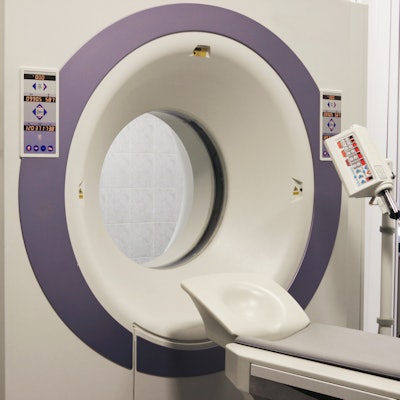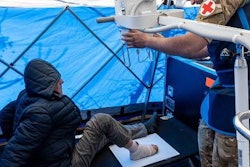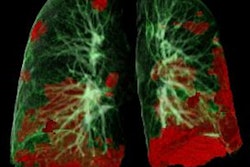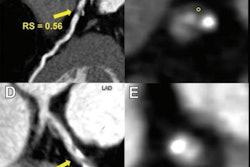
Chest CT bests x-ray for assessing blast injuries in children during war who have experienced blast injuries, according to research published December 3 in Injury.
In a study comparing standard chest x-ray and chest CT, Dr. Will Sargent and Dr. Ian Gibb of Imperial College London's Centre for Blast Injury Studies found that chest x-ray has lower sensitivity for identifying significant thoracic injury in children exposed to explosive blasts, in results that may help clarify how best to care for children in this emergency situation.
"Multiple studies have evaluated the sensitivity of [chest x-ray] for thoracic injury compared to CT, but few of these include children, all are primarily concerned with blunt trauma, and none include patients with blast injury," the authors wrote.
Thoracic trauma is an important cause of morbidity and mortality in children exposed to explosive blasts and early assessment of these injuries is vital, Sargent and Gibb noted. Due to the risk of radiation exposure, imaging guidelines recommend omitting chest CT in children if chest x-rays do not suggest significant injury. This recommendation, however, is based on a population not caught in the crosshairs of war conflict, they wrote.
The investigators compared chest x-ray and CT thorax exam findings from 105 children who were injured by blast and presented to the U.K. Role 3 Hospital at Camp Bastion, Afghanistan, during the conflict there between 2011 to 2013. Chest x-ray performance was evaluated compared with CT, which has long been considered the gold standard for detecting significant thoracic injuries.
The study found that chest x-ray's sensitivity for detecting pneumothorax was 43%; for hemothorax, 40%; for contusion, 44%; for laceration, 100%; for blast lung, 80%; and for subdermal metallic fragments, 75%. The modality missed all cases of diaphragm injury, clavicle fracture, and pleural effusion, although numbers of each were small, the authors reported. The specificity for chest x-ray injury detection was 94% for contusion and 93% for fragments. Overall, the sensitivity of chest x-ray for identifying an abnormality that would prompt CT imaging was 72% and specificity was 82%, they found.
The findings underscore that chest CT is still the better modality for evaluating children injured in war conflict, according to Sargent and Gibb.
"We argue that, given the challenge of clinical assessment of injured children and the potential for serious adverse consequences of missed thoracic injuries, there should be a low threshold for the use of CT chest in the evaluation of children exposed to blast," they concluded.



















